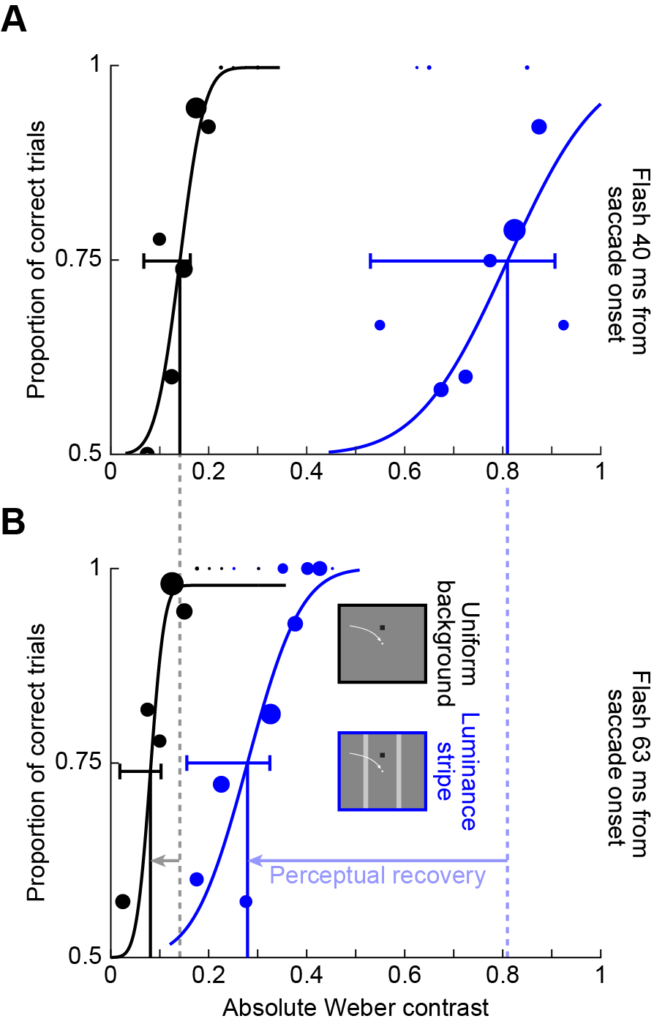We have a new paper in press at the Journal of Vision. The paper is part of the Special Issue: From Peripheral to Transsaccadic and Foveal Perception.
In this work, led by Matthias Baumann and co-authored by Saad Idrees and Thomas Münch, we continued exploring the robust phenomenon of perceptual saccadic suppression.
Saccadic suppression refers to the curious observation that a perfectly visible stimulus is rendered invisible if it is flashed around the time of a rapid eye movement. In our recent work (here and here), we found that this phenomenon starts at the very first stage of visual processing in the brain, the retina. This suggested to us that the phenomenon has a strong visual component. In the current work, we used this intuition to investigate this visual component of saccadic suppression. We performed perceptual experiments investigating how saccadic suppression depends on the visual conditions under which eye movements are made.
We found that saccadic suppression may be a fundamentally visual phenomenon. In fact, when we simulated the image flows on the retina caused by eye movements, but without the subjects making eye movements themselves, we found the very same suppression, and the very same dependencies on visual context.
These results recast our view on how the volitional generation of eye movements can influence vision. So, we are currently continuing our exploration of retinal mechanisms associated with image shifts caused by eye movements. Importantly, we are also investigating the neural modulations associated with eye movements beyond the retina.
We believe that our work can fill important gaps in our understanding of the interactions between body movement commands and sensation as a result of self-movement. Stay tuned for exciting follow-up discoveries in the near future!
The paper can be read here.

